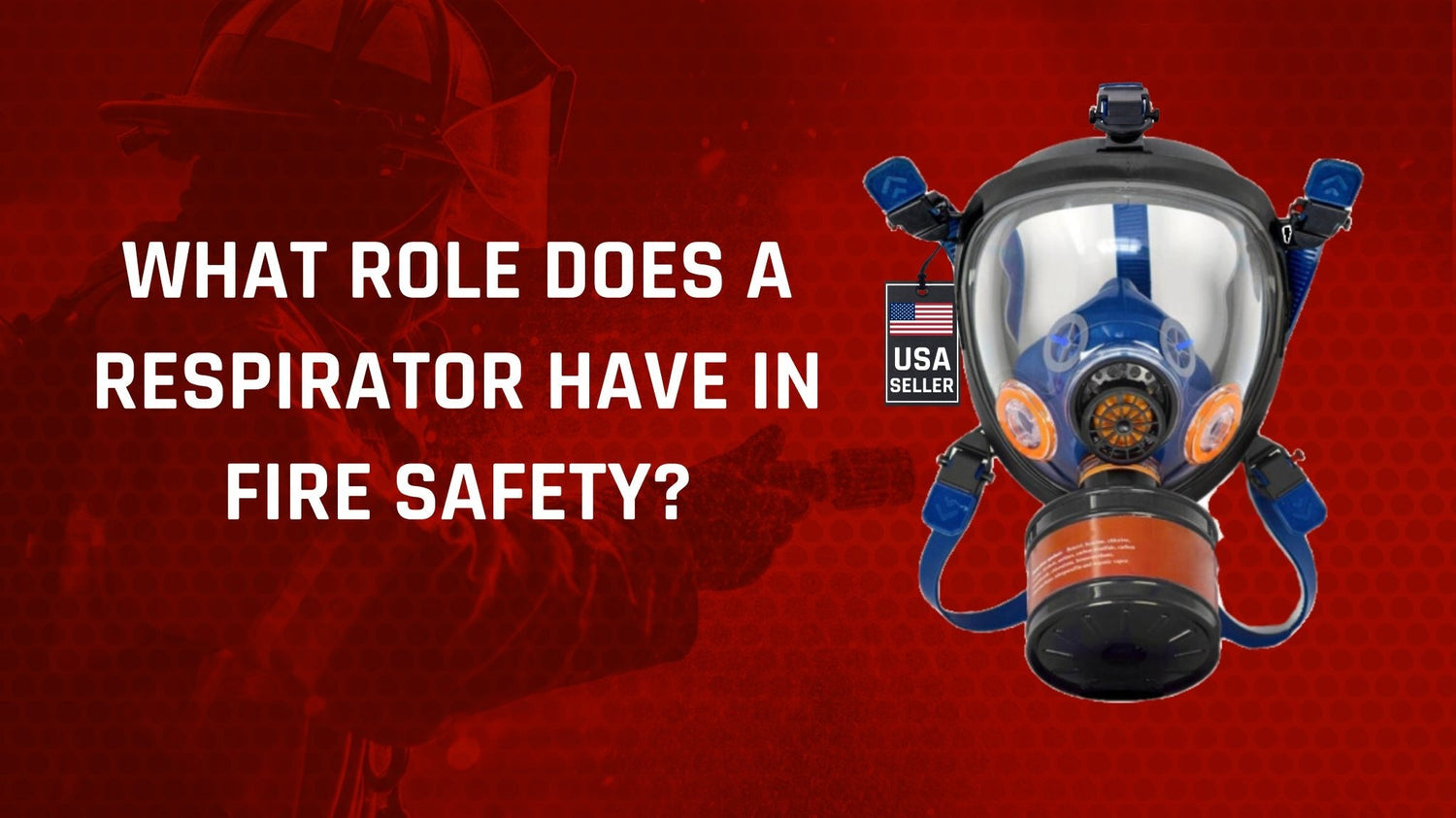Hey there, safety-conscious readers! Today, we're diving into a topic that's of utmost importance in the realm of fire safety: respirators. Whether you're a firefighter on the front lines, a homeowner affected by wildfires, or someone working in an industry with smoke exposure risks, understanding the role of respirators is key to staying safe in hazardous environments.
Fire Smoke:
First things first, let's talk about the enemy we're up against – fire smoke. When fires rage, they produce a lethal cocktail of toxic gases, particles, and chemicals that can wreak havoc on our respiratory systems. Inhaling smoke can lead to immediate symptoms like coughing and throat irritation, as well as more serious long-term health issues. It's a silent killer that demands our respect and vigilance.
Wanna explore Fire Extinguisher Vs Fire Blanket?
Click here.
Get Your Fire Safety Gear Here
What are the types of respirators and their role in Fire Safety?
Enter respirators – the unsung heroes in the fight against fire smoke. These specialized masks are designed to filter out harmful airborne contaminants, providing us with a lifeline when the air turns toxic. There are several types of respirators available, each with its own strengths and applications:
Disposeable Masks (N100 Respirators): An N100 mask is a type of respirator that provides the highest level of protection against airborne particles. It is classified by the National Institute for Occupational Safety and Health (NIOSH) as being able to filter out at least 99.97% of airborne particles.
Get Your Fire Safety Gear Here
Half-Face Respirators: Offering more protection than disposable masks, half-face respirators are equipped with replaceable cartridges for filtering particles, gases, and vapors. They're ideal for moderate to high levels of smoke exposure in various industries.



Get Your Fire Safety Gear Here
Full-Face Respirators: When it comes to comprehensive protection, full-face respirators are the way to go. These masks cover the entire face and provide both respiratory and eye protection against smoke, ash, and other contaminants.



Get Your Fire Safety Gear Here
Powered Air-Purifying Respirators (PAPRs): Powered by a motorized fan, PAPRs offer enhanced comfort and breathability, making them suitable for extended wear in hot and humid conditions.
Self-Contained Breathing Apparatus (SCBA): The pinnacle of respiratory protection, SCBA units supply firefighters with clean, breathable air independent of the surrounding environment, enabling them to operate safely in the most hazardous fire situations.
Read our log post on How to chose the right fire safety equipment?
What is the use of respirator by Firefighters?
For firefighters, proper respiratory protection is non-negotiable. SCBA units are the go-to choice for battling blazes, providing a continuous flow of clean air even in the midst of thick smoke. Half-face and full-face respirators equipped with appropriate filters and cartridges are also invaluable tools for addressing specific hazards encountered on the job.

In conclusion, respirators are indispensable allies in the quest for fire safety. Whether you're facing wildfires, fighting fires as a first responder, or working in smoke-filled environments, choosing the right respirator can mean the difference between life and death. By understanding the types of respirators available and adhering to best practices for their use and maintenance, we can breathe easy even in the heat of the fire zone. Stay safe out there, folks!




















Leave a comment
All comments are moderated before being published.
This site is protected by hCaptcha and the hCaptcha Privacy Policy and Terms of Service apply.